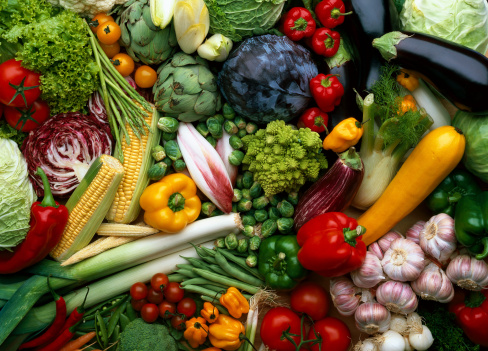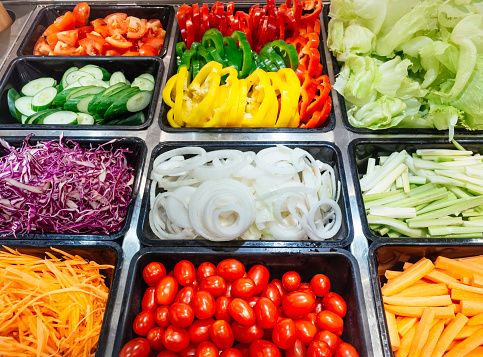You know you should eat more vegetables… and you’re working on it. Study after study shows these low-calorie foods may help protect you from the killer diseases—cardiovascular disease and cancer—and chronic ailments, such as type 2 diabetes.
But it’s easy to undo the health benefits of vegetables. Think “blob of cheese sauce,” for one.
Here are six other ways you may be going wrong:
1. Overcooking. Mushy veggies aren’t just a culinary no-no, they’re a nutritional one, too. A little cooking—steaming, boiling or lightly sautéing—can help release important antioxidants such as carotenoids in carrots, zucchini and broccoli. But overcooking can rob you of important nutrients such as vitamin C and even fiber. One veggie you might want to eat raw at least sometimes: broccoli. A study in the journal Agricultural and Food Chemistry found that heat breaks down an enzyme that helps produce sulphorophane, a chemical in broccoli that may prevent cancer. However, another cancer fighter, indole, is increased when you cook cruciferous vegetables like broccoli, cauliflower and Brussels sprouts. Tomatoes are another story. Technically a fruit, their most healthful ingredient, a naturally occurring pigment called lycopene, which has been shown to promote heart health and fight cancer, is actually released when tomatoes are cooked. In one study, lycopene content rose by 35 percent when the tomatoes were cooked for 30 minutes. The reason: Heat breaks down the thick cells walls and helps allow those nutrients to be absorbed by the body.
2. Creamy sauces. Adding a cream or cheese sauce to your vegetables may add flavor, but it also adds calories—anywhere from 100 to 300 or more for just a quarter cup serving. You don’t have to forego “creamy” sauces. You can recreate your favorite ones using nonfat milk in place of cream or whole milk, low-fat cheese in place of full-fat varieties, or even start with a base of cooked, fork-tender cauliflower. Just blend it with veggie broth, sautéed garlic, salt, pepper and skim milk until it has a creamy consistency.
3. Too much salt. Salt doesn’t just add water weight. A study published in 2014 by researchers at Georgia Regents University found that people who had high levels of salt in their diets were likely to be fatter than those who ate less. The reason: The researchers say there is evidence that high sodium intake may increase the size of fat cells.
4. Overdoing the dip. A little low-fat ranch dip with your crudité? It’s a good thing. Finishing up the entire container? Really bad, even if it did make you eat more veggies. Make sure you measure out the exact amount of dip, whether it’s low-fat ranch or hummus, you plan to eat and don’t go back for seconds. One delicious idea: Make your dip salsa. It has fewer calories so you can eat more and it gives you a double dose of vegetables!
5. Loading salads with the wrong things. Public salad bars have given most of us the wrong idea about salads. Everything from pasta to ham can be called a salad when you add mayo, but a real salad should be mostly greens and veggies. Watch the high-fat plant foods like avocado, seeds and nuts. Yes, a little is healthy—they all contribute good fats and other nutrients to the mix—but they also can be calorie bombs in large quantity. Be generous if you’re dressing your salad with sweet grape-based balsamic vinegar, but use a light hand with oil and measure out low-fat salad dressings.
6. Your frozen vegetables aren’t alone. Contrary to what you may believe, frozen vegetables have just as many nutrients as fresh ones, sometimes even more. When University of Georgia researchers compared the nutrient content of eight fresh and frozen fruits and vegetables, they found that the amounts of vitamin A, vitamin C and folate were actually greater in the frozen produce than that stored in a refrigerator for five days (the average amount of time they spend in the fridge in many homes). But make sure the frozen veggies you serve are just vegetables, and not floating in a fatty sauce or loaded with sodium. One half cup serving of frozen broccoli with cheese sauce is 90 calories and contains 490 milligrams of sodium—about a third of the amount the American Heart Association recommends we consume daily. A half cup of spinach in cream sauce may top 110 calories with 560 mg of sodium. If you can’t eat fresh, at least eat clean.
The post 6 Sneaky Ways You’re Ruining Your Veggies appeared first on The Leaf.
from The Leaf https://leaf.nutrisystem.com/6-sneaky-ways-youre-ruining-your-veggies/



Post a Comment